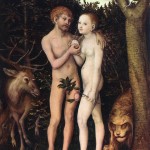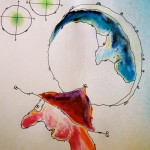One of my choice guides in all the work I do, whether writing or practicing therapy, is Marsilio Ficino (1433-1499), a fifteenth-century Italian astrologer, philosopher, translator, musician and priest who lived in what is now a suburb of Florence. He wasn’t all that different in style from a psychotherapist today. He gave workshops at his villa at which painters and architects discussed ideas, stories and images of the Greeks and Romans. Botticelli, for example, was present and was inspired to paint images like the Birth of Venus and Mars and Venus.
Ficino also had a Facebook mentality. He wrote letters to friends on great themes like friendship and community but published them so a large audience would have access to them. In this way he influenced many significant thinkers after him and inspired the English school system. My namesake, Thomas More, translated the biography of Ficino’s genius friend Pico della Mirandola.
I especially appreciate Ficino’s simple remedies for emotional problems. For example, if you’re feeling sad, he suggested walking by a body of water sparkling in the sun. He found  sparkle a healing quality in general, as when he suggests that the sparkle of sand on a beach echoes the sparkle of the stars at night, or is actually that sparkle caught by the sand and then emitted on a sunny day.
sparkle a healing quality in general, as when he suggests that the sparkle of sand on a beach echoes the sparkle of the stars at night, or is actually that sparkle caught by the sand and then emitted on a sunny day.
Ficino recommends wearing white if you’re reading a lot, to offset the dark moods of that Saturnine activity. He suggests wearing a piece of amber around your neck, hung on a yellow string or ribbon if you need some bright spirit from the sun. He suggests catching “the breath of Venus” by wearing sensuous clothes with her shade of green in them.
Today we tend to face our emotional problems by trying to figure them out and then changing our way of life. Ficino put more trust in the simple things around us and our relationship with the concrete world. He showed how to use the imagination to see metaphors and poetry everywhere and use those metaphors to address our moods and feelings. The painters who studied with him didn’t just express themselves or try to capture realistic portraits and landscapes. They made amulets of their work, so that art works were sources of healing. Art as medicine.
Ficino advised making a diagnosis of our problems and needs and designing life accordingly. If you’re sad, listen to either sad music to really feel your emotions or try some jovial or venusian music to counter your mood. If you’re lonely, study the stories and images of Jupiter, the spirit of conviviality—an important word to Ficino.
As a therapist I try to think like Ficino as I look for simple remedies in the everyday world for emotional conflicts. How you take care of your house or workplace affects how you feel and how your relationships go. Architecture, interior design, fashion, jewelry, cooking—all these things can be therapeutic, helping you to get along in life emotionally.
In the same spirit a business leader might take care with the design of a workplace or commercial building. Government leaders could think more deeply about how the design of cities and transportation and government forms and announcements affects the feelings and well-being of citizens. Imagine a Ficino-inspired airport, in which the psyche or soul is taken into account.
Above all Ficino advocated a soulful society, where beauty, compassion, the humanities, good ideas, the arts and a convivial community could flourish. Go visit Florence and catch a glimpse of its fifteenth-century buildings and paintings and streets, and you might feel as I do that Ficino had a good idea.











